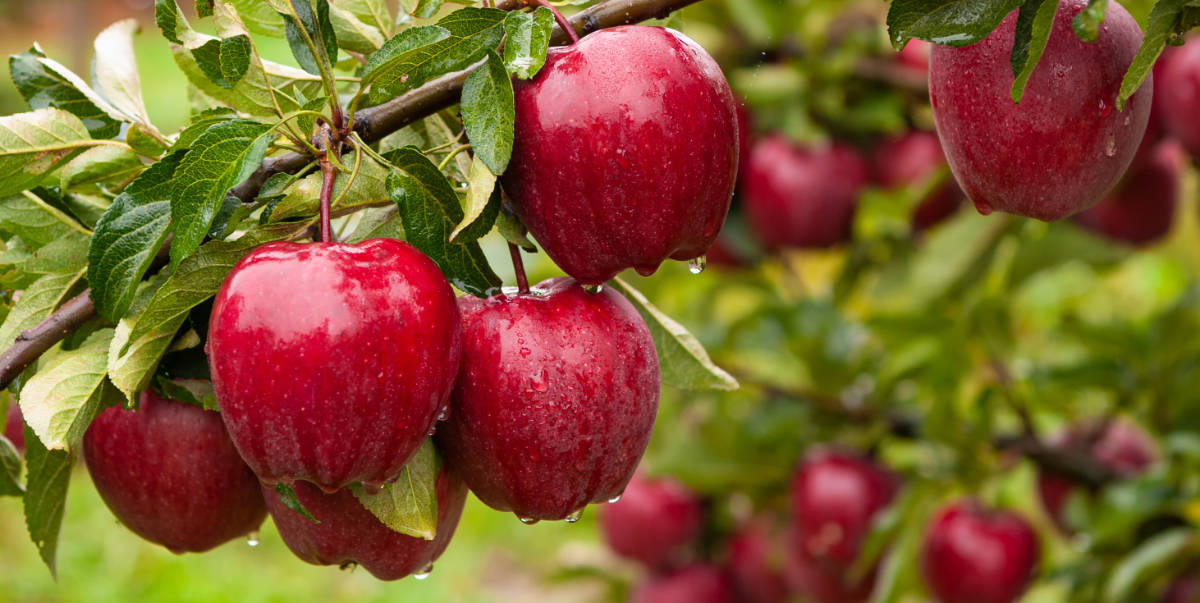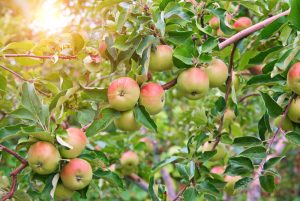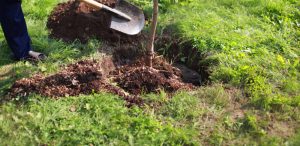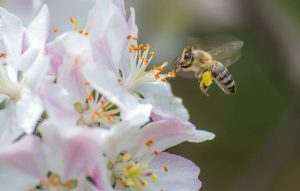
If you’re looking to grow your own apples, you may be surprised at how easy it is to get started. To begin growing apple trees from seed, all you need are some apple pips and soil that contains the nutrients the trees need to thrive. Here’s how to grow apple trees from seed and see those little seeds turn into mighty trees in your backyard or farm!

Why Apples
Apple trees are one of the easiest fruit trees to grow and don’t take up too much space. Thus they are ideal for those who want to grow something which is both useful and to a degree ascetically pleasing. But before you start digging, make sure you consider the following.
Get them into the ground as soon as possible. This applies to either seedlings or saplings. – Apple trees should be planted in early spring so they can establish themselves before summer arrives. Hot dry weather is never ideal for a new plant.
Think before you dig. Apple trees are not super fast growers, however, they will need space as time passes. Avoid planting next to concrete and brick walls and of course any form of electrical pylon etc.
Give your apple tree lots of water especially during the first two years of growth. After all producing apples are thirsty work.
Decide if you want to grow from seed or buy a sapling. They won’t fruit for a few years anyway however you do get a head start with the latter.
Growing from Seed
This takes a bit more effort than getting a sapling however it is easy enough if you follow these steps.
Wet some kitchen roll and place the seeds on it. Then fold it over to cover them and put the paper into a sealable plastic bag. Add a moist sponge to the bag to prevent the paper from drying out while the seeds prepare to germinate.
Alternatively, you can use a thin layer of damp sand in a plastic tub (an old margarine tub will be fine). Put the pips into this and cover it with another layer of sand and voila. Don’t forget to punch a couple of small holes in the lid so the seeds can get some air.
The pips will need cold stratification to germinate. Ideally, this should be around 3°-5°C (37°-41°F) and will take 6 to 8 weeks. This is best done in the fridge or outside if the climate is conducive. Check them everyso often to ensure they don’t dry out and add extra water if required.
Ready to Plant
When their time is up, remove the seeds from the refrigerator and plant 1 – 1/2cm (1/2″) deep in a small pot (4″ diameter is ideal), filled with well-watered, good-quality potting compost. Put them in a cold frame or under a Bell Cloche outside until the seeds germinate. A south facing sheltered spot is best. Its important not to let them dry out at this stage and water slowly to prevent the seed becoming dislodged.
Once temperatures reach a fairly regular 23°C (75°F) you should see germination around 2 to 3 weeks later. When you see the seedlings, move the pots to a partially shaded spot.
When they reach 5cm (2″) tall and produce a set of mature leaves you can re-pot them. At this point you can prune the roots if you want to to encourage the production of new feeder roots. To do this brush the soil off the roots and snip off one-third the length of their roots using clean garden snips.
Re-pot the seedlings into individual 5-inch + pots filled with garden soil. Grow in partial shade with a good weekly watering until the following spring. Then transplant them into their final position once night time temperatures are consistently above 10°C (50°F).
What are the best varieties?
Apples amay be one of the world’s most popular fruits, but not all are created equal. Thus you need to decide what you intend to do with the apples once they start to appear. Do you want them for for cooking or eating. Maybe you want to try your hand at cider making? Wnatever you will need to pick the right vatriety.
Some great varieties for eating fresh include Jonathan, Golden Delicious, and Granny Smith. For cooking try Empire and Northern Spy. With over 7500 varieties listed from you will be spoiled for choice
Some trees will produce fruit two years after planting while others can take up to 15 years before they bear fruit, so consider how long you plan on staying in your current home before deciding whhich to plant. Once planted, apple trees can last for hundreds of years if properly cared for so think of it as a legacy even if you dont hang around long enough to sample the fruits.
What do you need to plant an apple tree?
Planting an apple tree is easy. You’ll need the tree, of course, some potting soil, a shovel, and mulch. Here’s what to do next:
1) Dig the hole for the apple tree no more than 24 inches deep and 20 inches wide.
2) Place the apple tree in the hole with the roots facing down and back away from the planting site.
3) Fill in the dirt around the apple tree until it is level with the surrounding area.
4) Add about one inch of mulch to help insulate and protect your new apple tree during winter months.
5) Water the apple tree well before leaving it alone.
6) Now all you have to do is sit back and wait. Your apples will be delivered as soon as mother nature is ready.
When and where should I plant my tree?

Image: Planting A Tree/Shutterstock.com
Apple trees grow best in zones 3-6 or similar depending on which country you live in. Plant your tree in the spring, and give it plenty of space to grow. Apple trees can grow quite large and should be spaced around 10-20 feet apart depending on the variety chosen. They need around six hours of sunlight a day to thrive so bear that in mind.
Pollination tends to be via bees and other insects, so suburban areas are best as city centres have lower insect populations. This is another great benefit of planting them – helps keep the dwindling bee population fed.

Apple Blossom not only looks nice but feeds the Bees too!
Image: Minko Peev/Shutterstock.com
To ensure a consistent supply of apples it’s best to plant several trees. This also means that you can plant different varieties some for eating and some for cooking.
TLC For You Tree?
Now that you’ve planted your apple tree, what do you need to do to ensure it grows strong and healthy? Follow these simple steps to take care of your new fruit tree and make sure it’s off to a good start.
Keep the area around the base of the tree free from weeds, grass and other plants so there is plenty of space for air to get in.
Unless it has rained recently water your apple tree every few days. Increase this if it is particularly hot and use at least one gallon of water per day.
Feeding is important for fruit trees; use an organic fertilizer or compost tea once a month during the growing season.
Once your tree is bearing fruit, give it more fertilizer than usual as producing apples does require a lot of nutrients. You’ll also need to be vigilant about pests such as apple maggots, aphids, and codling moths that love to feast on apples. Make sure to clean up fallen apples from beneath the tree often for the same reason!
What if it isn’t cold enough?
Apple trees need to be planted in an area that will provide the proper cold winter temperatures required to encourage fruiting. If the temperature does not drop below freezing during the winter, then there is a lower chance of your tree producing apples. Fortunately, some varieties are more suited for warmer climates, so it’s important to research which would suit your area best before planting.
Should I prune my tree in winter?
A lot of people wonder if they should prune their apple trees in the winter. Although not necessary at this time the tree will benefit from the removal of dead branches. Also thinning out some of the branches near the centre allows light to penetrate further into the tree. If you don’t want to do this in the cold weather, make sure you do it as soon as spring arrives!
Once your tree is bearing fruit, give it more fertilizer than usual because apples are big consumers of nutrients. You’ll also need to be vigilant about pests such as apple maggots, aphids, and codling moths that love to feast on apples. Make sure to clean up fallen apples from beneath the tree often for the same reason!
Watch Out For Yellow Leaves?
A frequently asked question is – “Why Does My Apple Tree Have Yellow Leaves”.
If you are noticing yellow leaves this is most likely because the tree is not receiving enough water. As mentioned above make sure they get plenty, especially in very hot weather and when producing fruit. If you have clay or heavy soil, it can be hard for the water to soak in and make it down to the roots of your apple tree. Gently loosening the soil around the tree with a garden fork can help here.
Hopefully, this will have piqued your interest in growing your own. Before you go why not have a look at some of our other gardening articles & don’t forget to join the site if you are not already a member.
Header Image: Serhii Hrebeniuk/Shutterstock.com